Discomfort, a Disability Diagnosis, and Being “Outdoorsy” Anyway
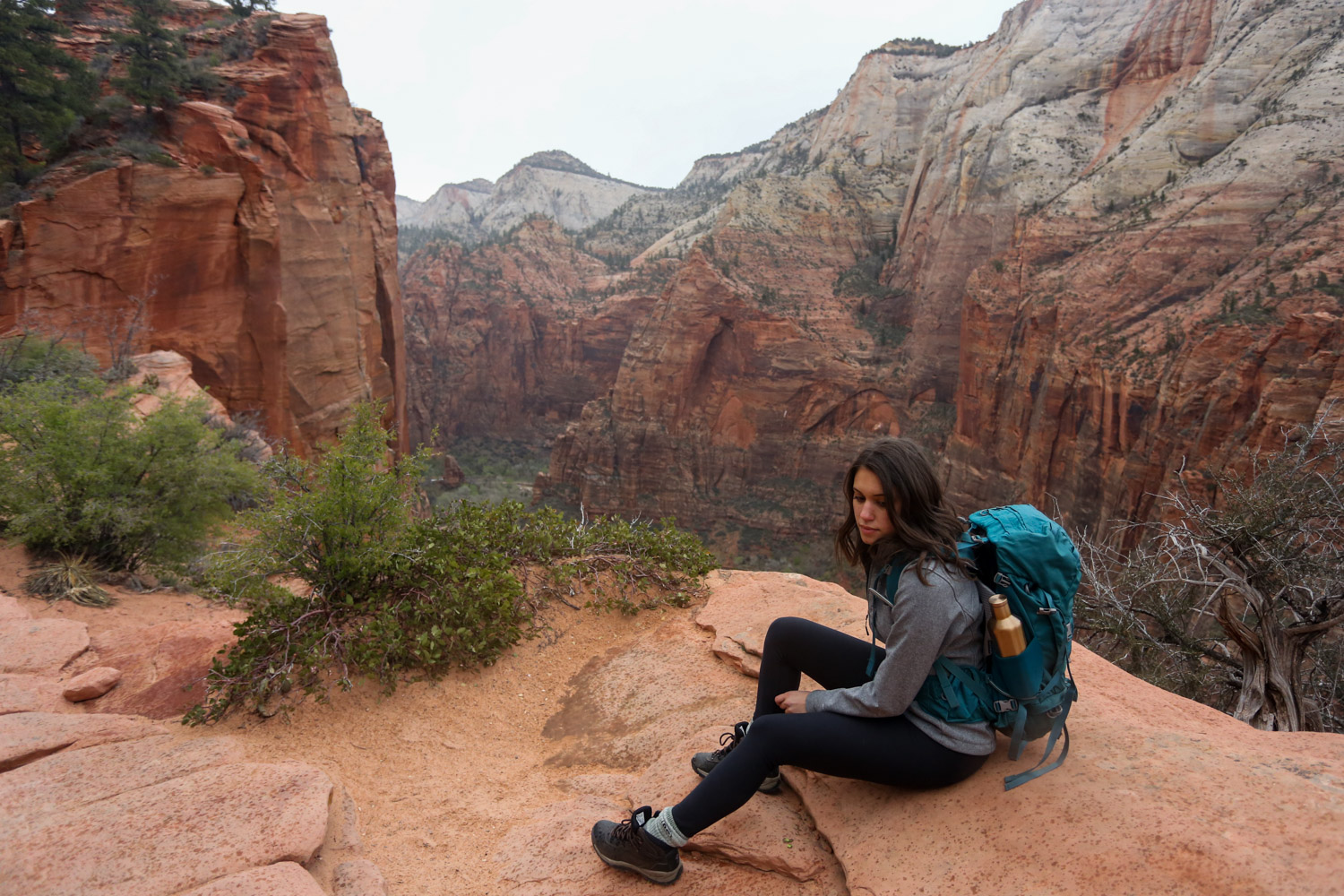
Discomfort, a Disability Diagnosis, and Being “Outdoorsy” Anyway
In vignettes of outdoor adventures, reflections of pain, and finally a diagnosis, Kristi Camara writes on embracing a life of adventure, even with limitations. Her disability does not mean her “outdoorsy” days are done.
By Kristi Camara
It’s March, and I’m hiking to Angel’s Landing in Zion National Park. The snow-capped, crimson canyons have me in awe—it’s my first time experiencing the desert, and it’s a stark contrast from the swampy suburbs I left back home in Florida.
A trek I fully expected to be difficult proved to be grueling, my body’s yet undiscovered limitations increasing the challenge. The dry wind cracks my skin, so much so that my hands resemble the land I’m standing on. The thinner air at elevation makes my lungs draw deeper—after all, I’m used to sea level—in an attempt to remedy how out-of-breath I feel. The sharp, burning sensation in my bones, though? For lack of better reasoning, I attribute to elevation as well. I dismiss it with a quick conclusion: I must be more out of shape than I thought, I guess. (For the record, I was. But that’s unrelated.)
I was an otherwise perfectly healthy young adult…but what began with a sudden acute pain in the left of my lower back would progress to change my everyday life.
I embrace the summit with an accomplished sense of gratitude, and while my eyes are soaking in the wonder of the unfamiliar desert, my legs are reveling in the much needed pause. I can’t possibly be this sore, can I? It’s not even soreness, I think to myself—it’s pain. This hurts. My partner Paul is patient with me as we slowly make our way back down to the trailhead, my knees doing their best not to buckle beneath me. The mental image of our cozy campsite keeps me going, my sleeping pad awaiting me now my only sense of reprieve.
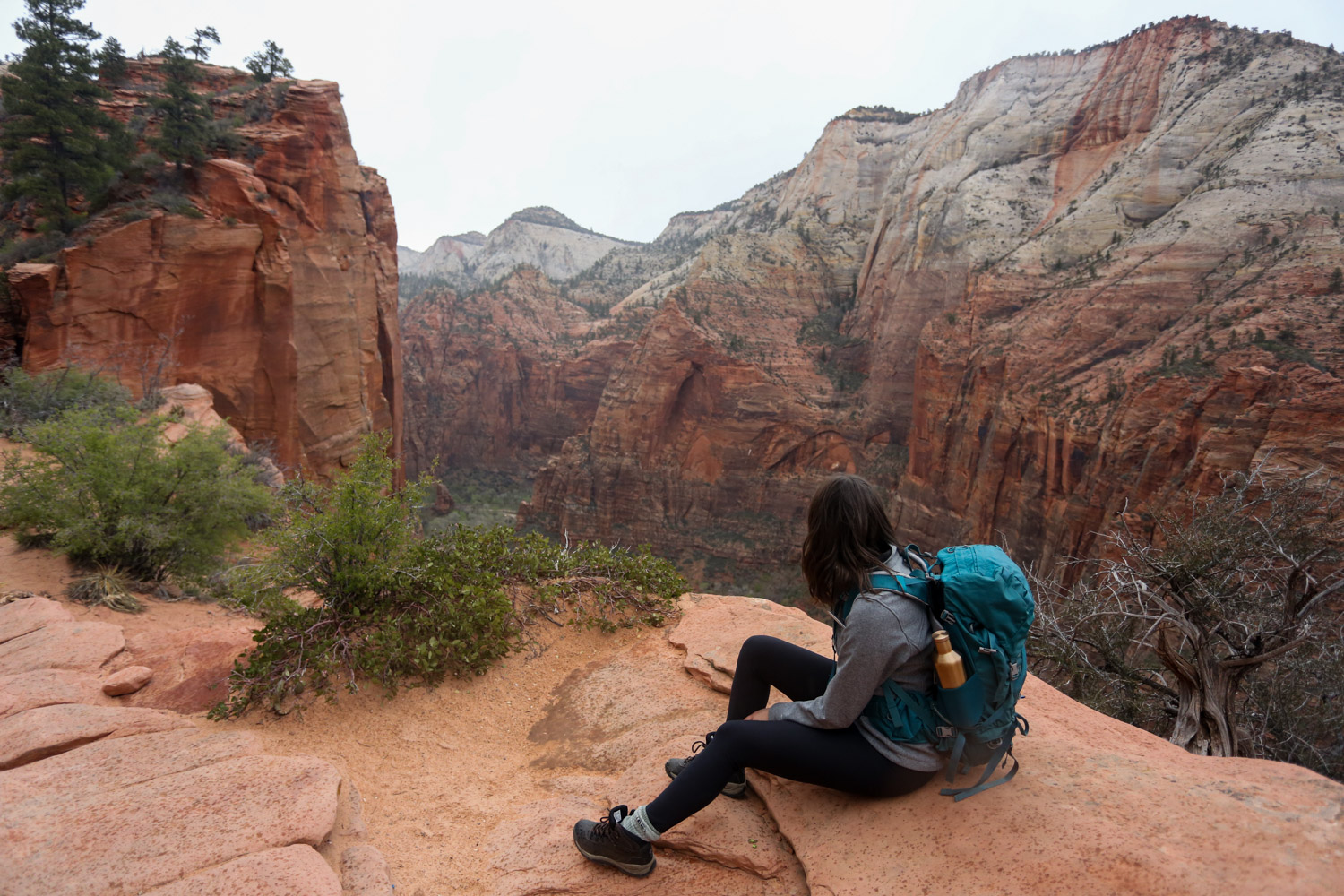
We stop at the visitor center to inquire about the Narrows, an iconic Zion hike following a flowing river between two towering canyon walls. The park ranger informs us that the hike is closed due to a flash flood warning. I’m bummed, but I breathe a secret sigh of relief. As much as I want to experience the Narrows, I don’t know if I currently have the endurance for it. The thought of wading through knee-deep water—of walking with an added obstacle in addition to my own body, each step forward being drawn with extra force—makes me cringe. We resolve that we’ll just have to make a second visit to Utah. I’ll be better by then, I reassure myself.
—————
I was an otherwise perfectly healthy young adult—only succumbed to one or two common colds per year, exercised a few times per week—nothing extraordinary to report. But what began with a sudden acute pain in the left of my lower back would progress to change my everyday life. It radiated across my hips and down my legs like an insidious vine, latching on and wrapping itself around my nerves and between my bones.
I initially brushed it off as an injury, assuming I’d strained too hard as I’d recently taken up jogging with Wiley, our newly adopted Australian Shepherd. But daily tasks, let alone exercising, became more difficult as my condition intensified. The morning runs with Wiley hurried to a halt as the pain grew more and more difficult to ignore. My once easy-going stride devolved into a hesitant limp. At 23 years old, I was beginning to think I’d benefit from using a cane. What otherwise healthy 23-year-old considers buying a cane?
My case pinballed from doctor to physical therapist to specialist to doctor and back. After months of searching for answers—not to mention a quickly piling stack of medical bills—I left each doctor’s office with not much more than a sympathetic shrug. I swiftly learned I had to become my own biggest advocate, as every medical professional I detailed my symptoms to was quick to dismiss them. It wasn’t until I begged a skeptical orthopedic surgeon (“you’re way too young to be feeling pain like that,” he’d tell me), to prescribe an MRI that my diagnosis began to reveal itself.
—————
It’s July, and I’m packing up before heading to the airport in the morning. Paul and I are flying to British Columbia after dropping Wiley off at my parents’ house where we’re spending the night. We sleep in what used to be my sister’s room, a source of familiarity and comfort naturally remodeled into a guest room as both of us have since moved out. It’s easy to feel nostalgic for childhood and even teenagehood when I’m home—the invincibility that comes with immaturity feels especially rosy-tinted as I peer through newly jaded, pain-riddled glasses.
I felt fine when we arrived, but something about the angle of the fold-out sofa bed triggered a flare-up overnight. How delicate my bones are that a not-completely-flat surface appears to enrage them. I limp to the kitchen for breakfast before our flight and pull a bottle of ibuprofen from the pantry. I stuff it in my suitcase and hope for the best.
We came to British Columbia in search of mountains and alpine lakes. I’d been daydreaming of the glassy, cerulean waters of Joffre Lake, and I’m amazed as we hike the surrounding trail. A stroke of bad luck meant my sofa bed-triggered flareup never quite vacated my bones, but I push through, determined to cross this hike off my bucket list.
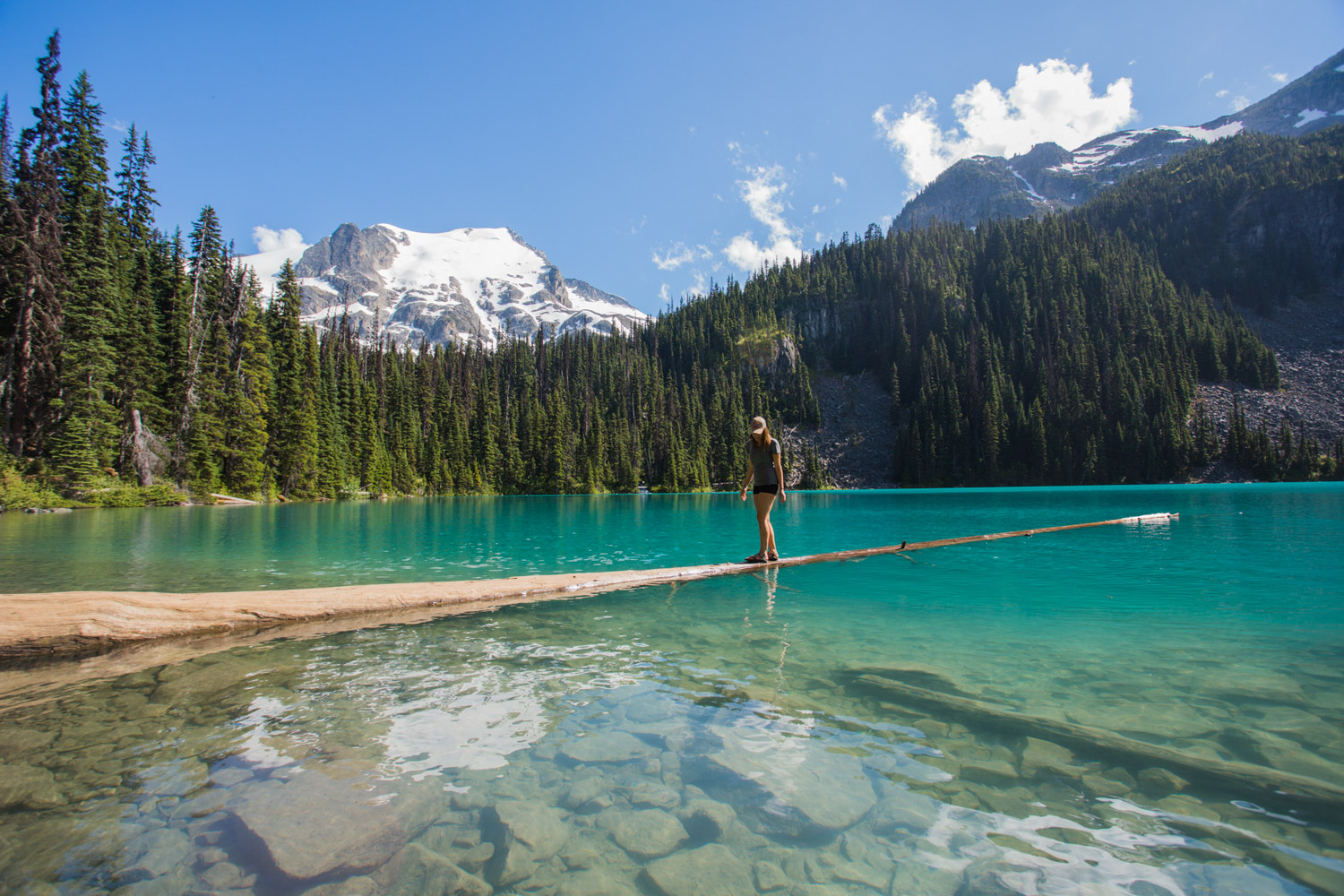
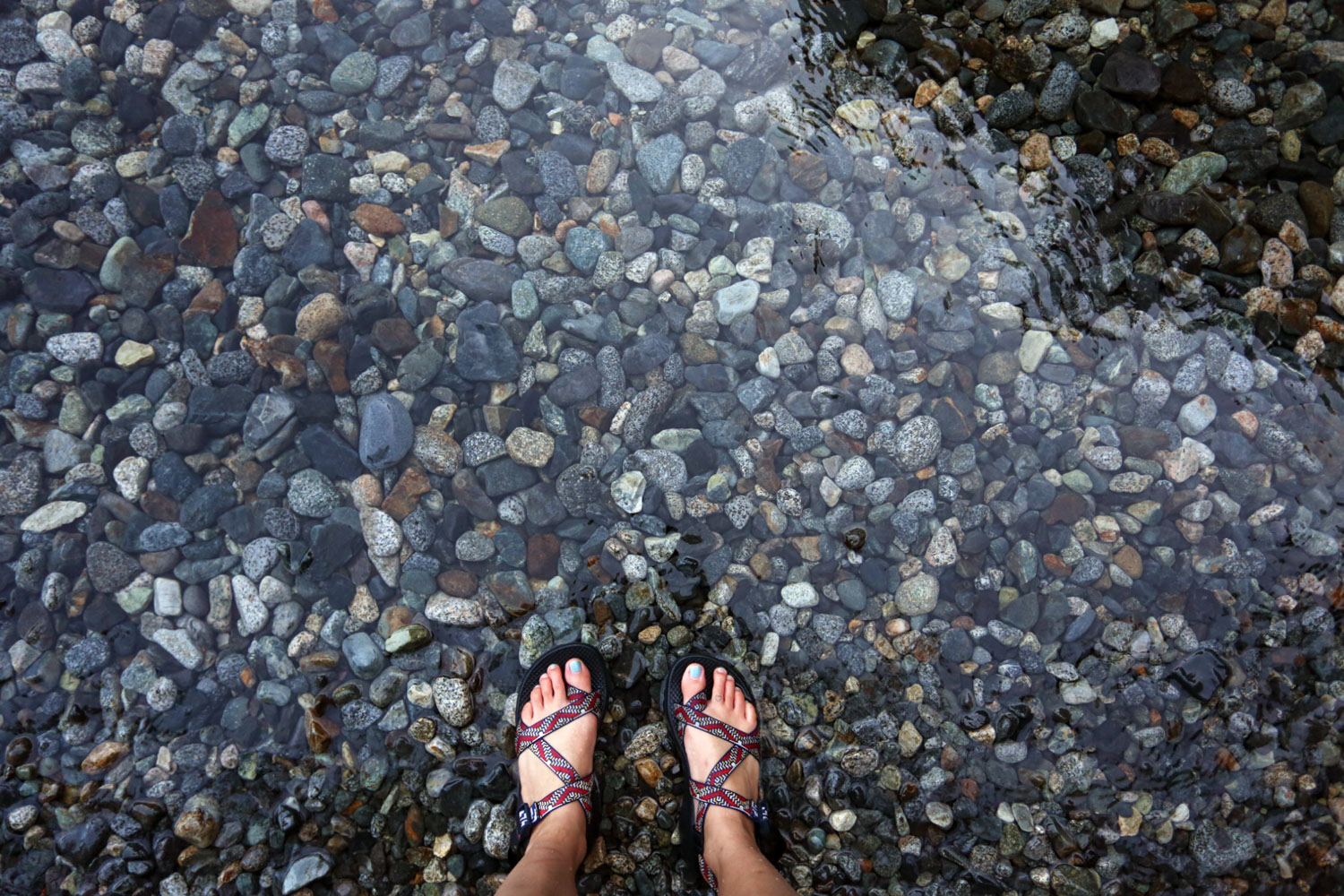
The ibuprofen I gulped down earlier is wearing off, and I’ve had to pause on the trek up to regain my composure a few times. I do my best to focus my thoughts elsewhere—the summer sun is warm on my skin, and I reflect on the natural blush my cheeks must bear rather than the fierce fire in my aching bones.
The crystal lake is frigid despite the weather’s warmth, and as my feet ripple the still water, I focus on the sudden numbness in my toes rather than the icy nerve pain streaming down my legs. I soak in the view with a forced appreciation, a self-mandated sense of positivity. Summoning all my willpower, I make a conscious decision to be proud of my body for bringing me up this mountain, despite having made it more difficult to do so.
—————
Coming to a diagnosis might’ve been more difficult than living with the actual symptoms. Mentally, at least. After a few painstaking weeks of X-rays, MRIs, physical therapy, specialist visits, and a cortisone injection to the bone (ouch)—all that gave more questions than clarity—I received a phone call from my pain specialist while at work.
“Your scans look like you have concentrated inflammation in your sacroiliac joints, so we examined your bloodwork to see if there was something else going on,” he explained routinely. “Your labs tested positive for HLA-B27, so the next step is to refer you to a rheumatologist to diagnose you with an autoimmune disorder.”
At 23 years old, I was beginning to think I’d benefit from using a cane. What otherwise healthy 23-year-old considers buying a cane?
Ankylosing Spondylitis affects approximately 0.5% of the U.S. population. It presents as inflammation in the sacroiliac joints, two of the body’s largest joints that connect the hips to the spine, causing debilitating pain and limited mobility. Over time, if left untreated, it can progress up the spine and cause vertebrae to fuse together. It most commonly runs in families in the form of the often hereditary HLA-B27, a genetic marker for arthritic autoimmune conditions. I’m the only one in my family who has it.
I remember hiding in my office bathroom after ending the call, sinking to the floor, and crying.
I cried in fear: will I never know a pain-free, normal life again?
And I cried in relief: finally, I have an answer.
—————
It’s August, and Paul and I are seeking out salt water in an attempt to quell the heat from Florida’s unrelenting, sticky summer. We’ve just acquired a used kayak from a neighbor, and we excitedly drive it out to the nearest inlet.
Carrying a double-seater kayak is undoubtedly awkward, as you have to shift your weight to one side to compensate for what you’re lifting on the other. It’s awkward, but it’s not difficult. It shouldn’t be, I assure myself.
We hoist the kayak off the top of the truck and steadily lower it to the ground. The boat dock is only a few feet away. I take a deep breath and lower myself to lift my end of the kayak towards the water. My feet shuffle beneath me, stifled by the jolt of unbalanced pain suddenly staggering through my hips. At the water’s edge, we drop the kayak in and I push it further with a breath of relief: now for the easy part, enjoying the paddle.
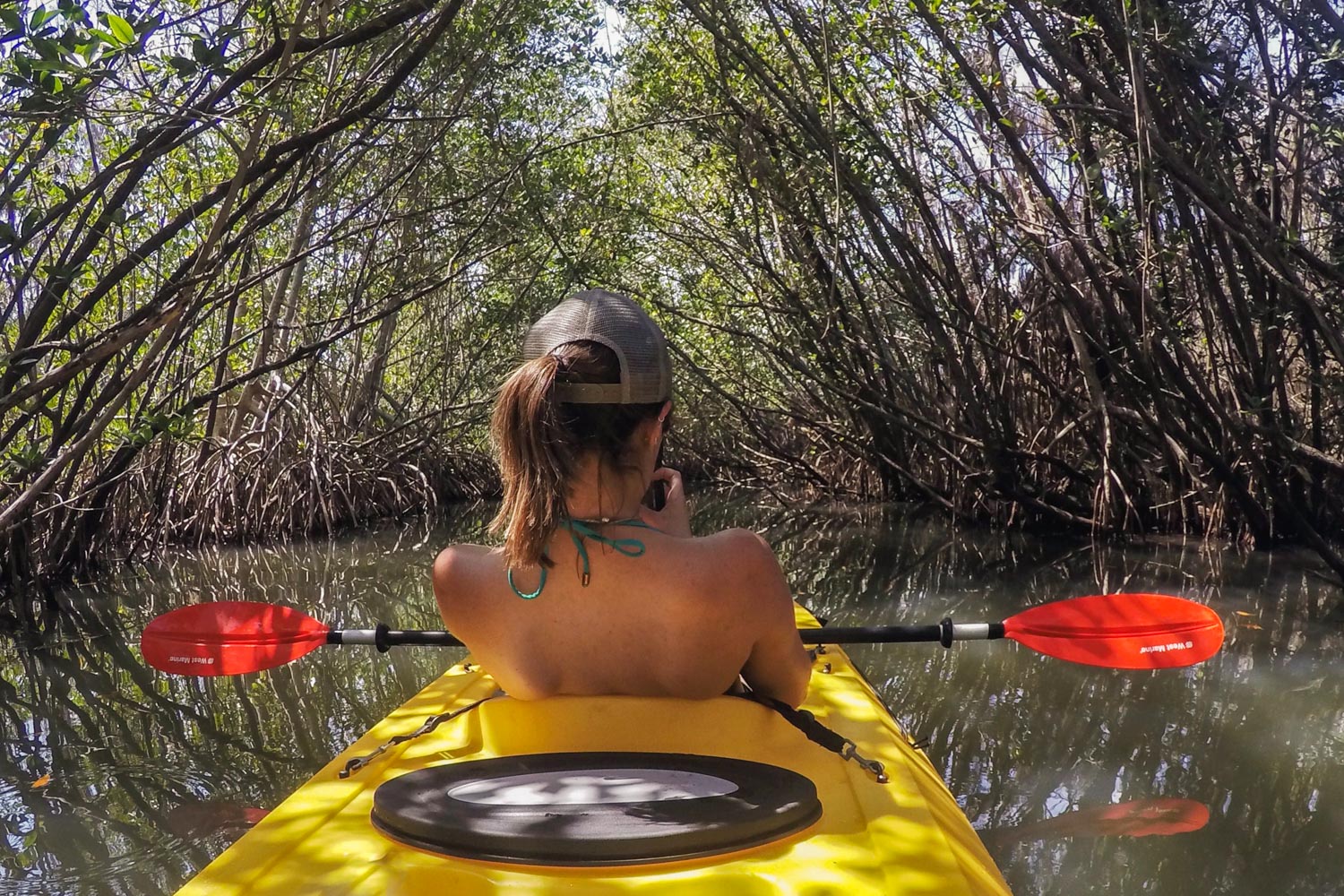
It was a short stint of physical exertion—embarrassingly short, as we parked so close to the water—but my body aches as a result. We drift through shrouding mangroves and I take solace in the fact that for now, the mild current is working in our favor. We paddle in unison, each twist of my torso demanding unseen stability, untethered strength from my spine.
We park our kayak at a sandbar and exit to explore. The humidity hangs heavy in the air, just as the weight of my body feels heavy on my aching hips. I stretch, soaking in the sunlight on my salty skin, and for a moment, surface level warmth is all I feel—not the burning beneath. The shallow water welcomes me and I wade in, my body becoming weightless, my limbs lifted by the waves. I float, my bones buoyed by the water: an assurance of freedom, however fleeting it may be.
—————
To recreate outdoors—let alone to forgo a mattress and sleep outdoors—is to choose discomfort. It’s to choose desert dust and baby wipe baths over fresh pajamas and a proper shower. It’s to choose sunburnt skin and squinted eyes over window lighting and a ceiling fan. But what do you do when discomfort was your preferred way to spend the weekend, and now it’s your life by default? What do you do when discomfort becomes your new normal?
During my worst days, I’m paralyzed by pain. My affected joints feel like they’ve been lit ablaze. The slightest movements fan the flames, spreading heat to my surrounding bones. My back bears a dull, tired soreness that no stretch, no firehose can relieve. But during my best days, I’m active as ever. I can go for a jog or hike up a steep trail and feel little to no pain—just muscle soreness I’ve grown to welcome warmly with gratitude. It means I’m moving. It means I can.
The unforgiving nature of autoimmune diseases means flares come and go, and my medication regimen and lifestyle choices can only do their best to keep them at bay. There’s rarely a morning I wake up without being reminded of my condition, but I can only learn to take each day at a time. It’s what comes with the territory of my new normal—a constant waning of physical capability; a consistent, self-mandated presence of mental perseverance.
—————
It’s September, and I’m settling into our tent under a clear, starry sky in Alabama Hills with Paul and Wiley. The night air is frigid and my bones won’t let me forget it. Comfort escapes me and I stir restlessly in my sleeping bag. My spine is stiff as I lay flat on my back, staring blankly at the roof of the tent.
Why do I even subject myself to this in the first place? I think as I finally drift off to sleep.
Just before dawn, Wiley rustles around in the tent prompting me to rise and unzip my sleeping bag. I drowsily peek out of the zipper door to reveal the start of the most spectacular sunrise I’ve ever witnessed—shades of blue, lavender, and orange smear the sky as the distant mountaintops are dipped deeper and deeper into the pink light of daybreak. The vast desert foreground is empty and inviting. We step outside into a silent world all our own, the crunch of newly disturbed sand beneath our boots and Wiley’s paws seemingly the only sound within miles. It hurts to walk, but right now, I don’t mind. The three of us climb up a boulder, sit, and watch as the new day’s sunlight paints the sky.
Oh, right. That’s why.
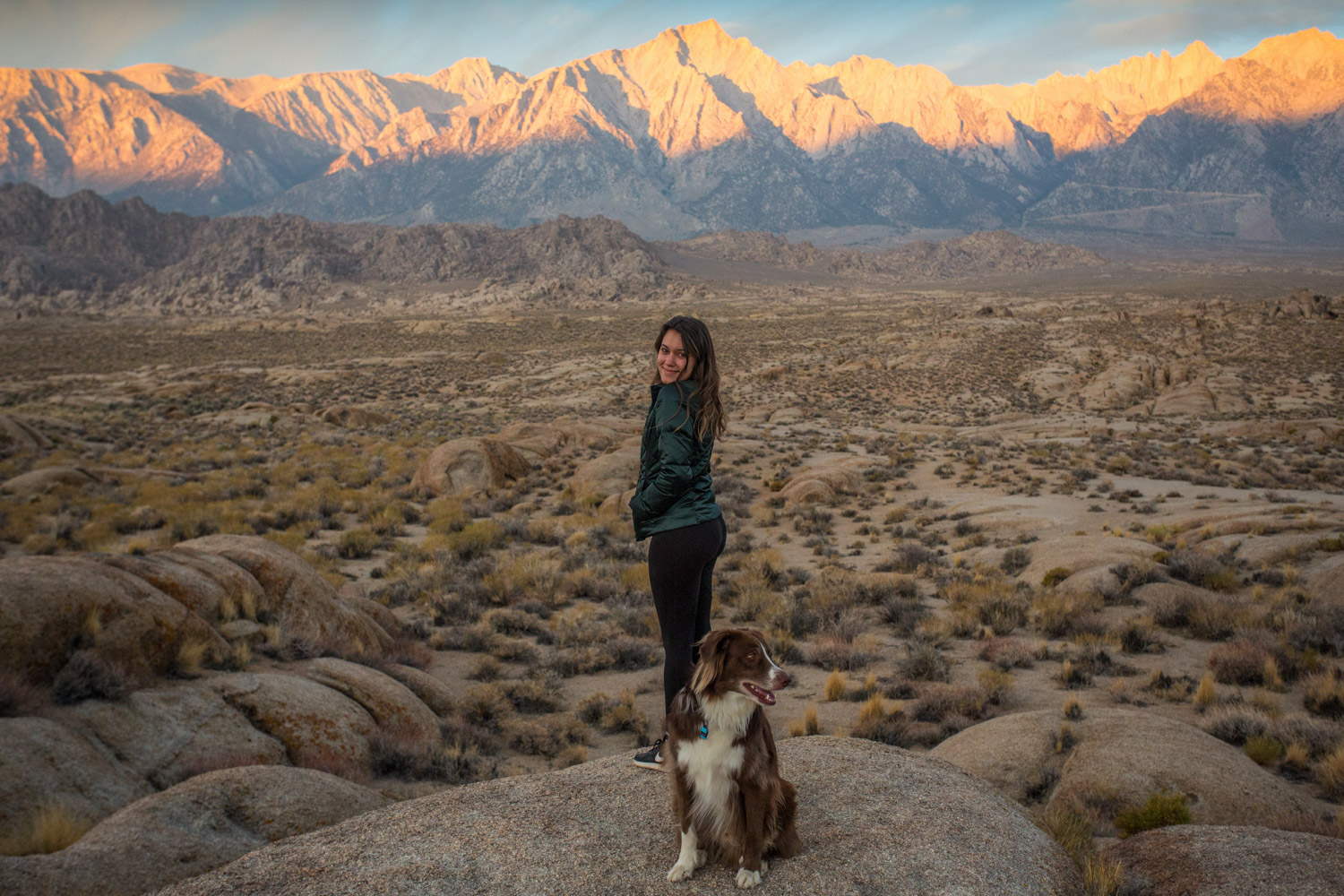
Photos courtesy of Kristi Camara and Paul Chestnut
From the editors: Every disability is different. If you are (or someone else in your life is) navigating a new diagnosis or lifelong disability—combined with a love of hiking or otherwise experiencing outdoors, see a few resources listed below:
- Disabled Hikers has real information for disabled hikers, from disabled hikers, with resources, advocacy, and stories. They’re also on Instagram @disabledhikers.
- Unlikely Hikers is a diverse, anti-racist, body-liberating outdoor community featuring the underrepresented outdoorsperson, including those with disabilities. Find the Instagram community @unlikelyhikers.
- These nonprofits host events and activities, and have nationwide chapters supporting adaptive outdoor adventures:
Kristi Camara is a Cuban- and Portguese-American writer, photographer, and digital content marketer living in southern California. When she’s not desert dwelling or beach bumming, you can usually find her baking cookies or cuddling with her Australian Shepherd, Wiley. You can see her work at kristicamara.com or follow along with her on Instagram @kristicamara.
Be the first to comment